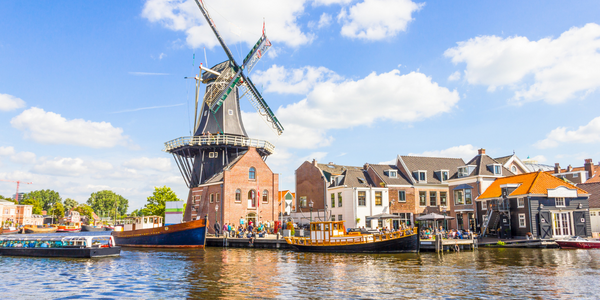Technology Category
- Functional Applications - Fleet Management Systems (FMS)
- Functional Applications - Transportation Management Systems (TMS)
Applicable Industries
- Cities & Municipalities
- Transportation
Applicable Functions
- Logistics & Transportation
Use Cases
- Public Transportation Management
- Transportation Simulation
About The Customer
The customer in this case is the City of Chandler, an urban area in Arizona, US. The city is committed to innovation, as reflected in its motto 'Community of Innovation.' The city was looking for a way to digitize and expand its transit network to better serve its residents, particularly students in K-12 schools. The city had secured funding for this project and was looking for a partner to help them implement a solution that would increase accessibility and convenience for its residents.
The Challenge
The City of Chandler, located in Arizona, US, was seeking to digitize and expand its transit network to better serve its residents, particularly students in K-12 schools. The city wanted to make the entire system more accessible and convenient for residents, especially for students traveling to and from extracurricular activities. The city had secured funding through an 'A for Arizona Transportation Modernization Grant' in July 2022, but needed a partner to help them implement a solution that would meet their goals of increased accessibility and convenience.
The Solution
The City of Chandler partnered with Via to launch a microtransit service called Chandler Flex. This service is powered by Via's proprietary algorithm, which allows the five-vehicle fleet to run on a flexible schedule and be dynamically routed as riders book trips through the mobile app or support line. Chandler Flex is designed to promote student rides to and from extracurricular activities, providing fixed-route options where available. This ensures that the service functions as part of a truly unified transit network. Students ride for free, while seniors and riders using a wheelchair receive 50% off the standard $2 fare. The service quickly gained popularity and maintained its efficiency, meeting 91% of ride demand within the first five months.
Operational Impact
Quantitative Benefit

Case Study missing?
Start adding your own!
Register with your work email and create a new case study profile for your business.
Related Case Studies.

Case Study
Turning A Stadium Into A Smart Building
Honeywell created what it called the “intelligent system” for the National Stadium in Beijing, China, turning the venue for the opening and closing events at the 2008 Summer Olympics into a “smart building.” Designed by highly controversial artist Ai Weiwei, the “Bird’s Nest” remains one of the most impressive feats of stadium architecture in the world. The 250,000 square meter structure housed more than 100,000 athletes and spectators at a time. To accommodate such capacity, China turned to Honeywell’s EBI Integrated Building Management System to create an integrated “intelligent system” for improved building security, safety and energy efficiency.
.png)
Case Study
Smart Street Light Network (Copenhagen)
Key stakeholders are taking a comprehensive approach to rethinking smart city innovation. City leaders have collaborated through partnerships involving government, research institutions and solution providers. The Copenhagen Solutions Lab is one of the leading organizations at the forefront of this movement. By bringing together manufacturers with municipal buyers, the Copenhagen Solutions Lab has catalyzed the development and deployment of next-generation smart city innovations. Copenhagen is leveraging this unique approach to accelerate the implementation of smart city solutions. One of the primary focus areas is LED street lighting.

Case Study
Airport SCADA Systems Improve Service Levels
Modern airports are one of the busiest environments on Earth and rely on process automation equipment to ensure service operators achieve their KPIs. Increasingly airport SCADA systems are being used to control all aspects of the operation and associated facilities. This is because unplanned system downtime can cost dearly, both in terms of reduced revenues and the associated loss of customer satisfaction due to inevitable travel inconvenience and disruption.

Case Study
IoT-based Fleet Intelligence Innovation
Speed to market is precious for DRVR, a rapidly growing start-up company. With a business model dependent on reliable mobile data, managers were spending their lives trying to negotiate data roaming deals with mobile network operators in different countries. And, even then, service quality was a constant concern.

Case Study
Buoy Status Monitoring with LoRa
The Netherlands are well-known for their inland waterways, canals, sluices and of course port activities. The Dutch Ministry of Infrastructure indicates that there are thousands of buoys and fixed items in and near water environments that would profit from IoT monitoring. One of the problems with buoys for example, is that they get hit by ships and the anchor cable breaks. Without connectivity, it takes quite some time to find out that something has happened with that buoy. Not to mention the costs of renting a boat to go to the buoy to fix it. Another important issue, is that there is no real-time monitoring of the buoys at this moment. Only by physically visiting the object on the water, one gains insight in its status.








